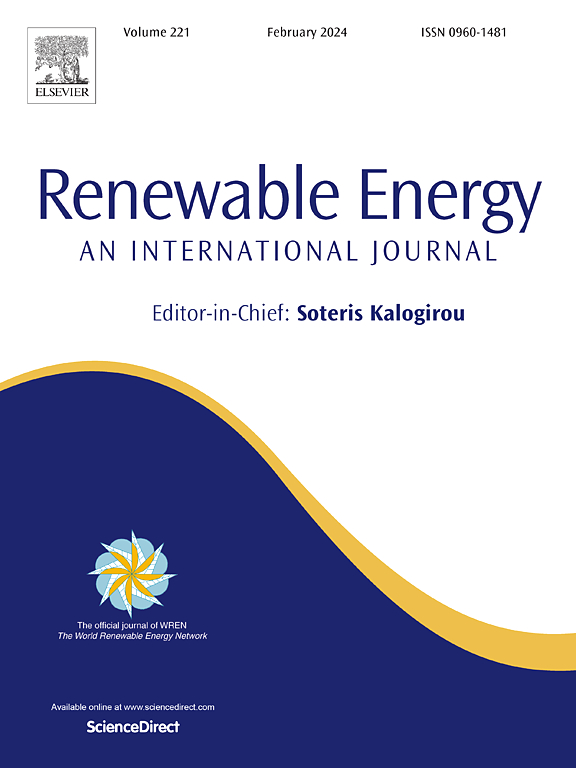PV-MLP:基于时频融合的轻型斑块多层感知器网络,用于光伏长序列功率的准确预测
IF 9
1区 工程技术
Q1 ENERGY & FUELS
引用次数: 0
摘要
随着光伏产业的快速发展,实现准确的长序光伏功率预测对提高电网运行效率具有重要意义。然而,随着时间步长的增加,预测误差也会累积,使得准确的长序列预测成为一个重大挑战。此外,尽管基于Transformer体系结构的主流预测模型可以在长序列预测中达到令人满意的预测精度,但它们经常遇到显著的计算负担,使其在实际工程部署中变得困难。为此,我们基于patch技术和多层感知器(MLP)结构,提出了PV-MLP和PV-MLPx两种轻量级预测模型。具体而言,该方法首先纠正数据异常,减少特征冗余。然后,在提出的学习模型中,我们首先将时间序列数据分割成多个小块。PV-MLP采用共享的MLP层提取每个patch的时间特征,有效降低了计算量。PV-MLPx使用专用的MLP层独立处理每个patch,适用于计算资源丰富的场景。最后,将每个patch提取的特征沿着特征维度进行融合,直接通过全连通层生成最终结果。此外,为了解决在直接预测范式中忽略标签序列自相关的问题,我们在传统的均方误差损失函数的基础上,应用快速傅里叶变换(FFT)将预测和接地真值转移到频域进行二次校准。最后,对PV-MLP的预测精度和通用性进行了综合评价。实验结果表明,与数据1中的基线模型相比,该模型在96、192和384步的长期预测任务上的均方误差(MSE)分别提高了68.7%、43.1%和38.4%。此外,我们的模型在三个预测任务上的平均绝对误差(MAE)保持在1.0以下,显著优于其他基线模型。本文章由计算机程序翻译,如有差异,请以英文原文为准。
PV-MLP: A lightweight patch-based multi-layer perceptron network with time–frequency domain fusion for accurate long-sequence photovoltaic power forecasting
With the rapid development of the photovoltaic (PV) industry, achieving accurate long-sequence PV power forecasting is important for improving grid operation efficiency. However, as the number of time steps increases, the prediction errors also accumulate, making accurate long-sequence forecasting a significant challenge. Moreover, although the mainstream forecasting models based on the Transformer architecture can achieve satisfactory forecasting accuracy in long-sequence forecasting, they often encounter significant computational burdens, making them difficult in practical engineering deployments. To this end, based on the patch technique and multi-layer perceptron (MLP) structure, we propose two lightweight forecasting models: PV-MLP and PV-MLPx. Specifically, the proposed methods first correct data anomalies and reduce feature redundancy. Then, in the proposed learning models, we first segment the time-series data into multiple patches. PV-MLP employs a shared MLP layer to extract the temporal features of each patch, which effectively reduces the computational burden. PV-MLPx processes each patch independently using dedicated MLP layers, making it suitable for scenarios with abundant computational resources. Finally, the features extracted from each patch are fused along the feature dimension and generate the final results directly through a fully connected layer. Additionally, to address the issue of ignoring label sequence autocorrelation in the direct prediction paradigm, we build upon the traditional mean squared error loss function by applying the Fast Fourier Transform (FFT) to transfer the predicted and ground truth values to the frequency domain for secondary alignment. Finally, we conducted a comprehensive evaluation of PV-MLP’s forecasting accuracy and generalizability. Experimental results show that our proposed model achieves over 68.7%, 43.1%, and 38.4% improvements in Mean Squared Error (MSE) compared to the baseline models in data 1 on three long-term forecasting tasks with horizons of 96, 192, and 384 steps, respectively. Moreover, the Mean Absolute Error (MAE) of our model remains below 1.0 on three forecasting tasks, significantly outperforming the other baseline models.
求助全文
通过发布文献求助,成功后即可免费获取论文全文。
去求助
来源期刊

Renewable Energy
工程技术-能源与燃料
CiteScore
18.40
自引率
9.20%
发文量
1955
审稿时长
6.6 months
期刊介绍:
Renewable Energy journal is dedicated to advancing knowledge and disseminating insights on various topics and technologies within renewable energy systems and components. Our mission is to support researchers, engineers, economists, manufacturers, NGOs, associations, and societies in staying updated on new developments in their respective fields and applying alternative energy solutions to current practices.
As an international, multidisciplinary journal in renewable energy engineering and research, we strive to be a premier peer-reviewed platform and a trusted source of original research and reviews in the field of renewable energy. Join us in our endeavor to drive innovation and progress in sustainable energy solutions.
 求助内容:
求助内容: 应助结果提醒方式:
应助结果提醒方式:


